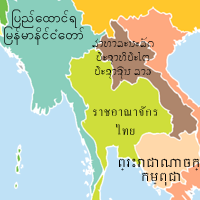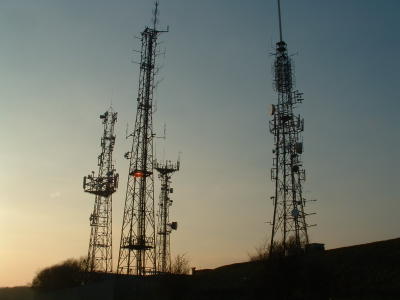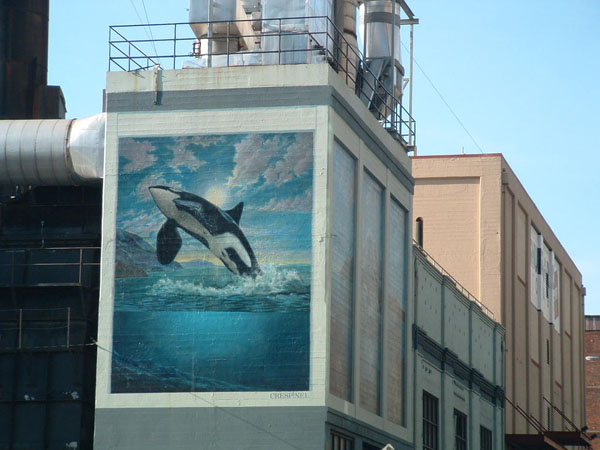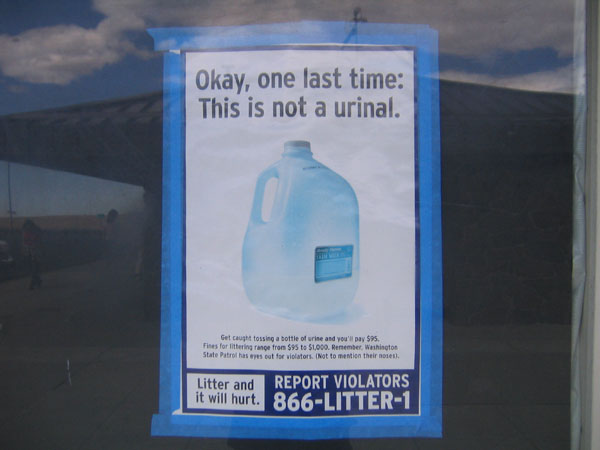July 2007 Archives
The 'digital divide' of the future won't be between those who do and don't have simple access to the internet--the meaningful difference will be between those who have the ability to *use* the staggering quantities of information (already) available to them, and those who are simply 'surfing' the net.
I would argue that this has always been the case, from the beginning; today's easy access to IM and email admittedly makes available new habits and lifestyles, but the simply communicative applications of the present--meaningful as they are--are already becoming a social commodity. The next step will be to allow the individual to make the world (the world's data) work for them in ways that are comfortable: social, intuitive, responsive ways. At the heart of this notion is the idea that 'smart' or 'intelligent' or 'agent' systems of the future (at least the mid-term future) will not be able to deliver their much-speculated benefits entirely on their own. Problems concerning human agency, context, and classification may not ever be entirely automated. Thus the person who understands the conceptual background and organization of the world's information will always have an (increasingly larger?) advantage--socially, economically--over the person who is at the mercy of such systems' recommendation.
The question to be considered: can incisive (social and technical) understanding combine with good design to create power-user tools for everyone? To what degree can Don Norman's "knowledge in the world" compensate for the expert's understanding, of both subject background and technical mastery?
Expertise comes in so many forms--I just saw a garbage collector empty a bin on a street corner; the type with a large hard plastic container that sits inside a more aesthetic permanent fixture. He took out the plastic can, walked to the truck and emptied it...then heaved it 20 feet through the air into its metal streetside housing. The pitch looked unlikely at best; it wobbled and spun in the air...and landed absolutely perfectly, nothing but net so to speak, saving him the time and effort of the expected course.
Corollary: the occasional tyrrany of bureaucratically derived standards: the way in which the lowest common denominator becomes the mean, or even above. The bell curve atrophies when manipulated. There is no doubt an ISO 9001 procedure which describes the proper and approved way to replace an empty trash can into its receptacle. Happily, this standard was ignored.
I'm not railing against standards in general; on the contrary, they are absolutely vital to everyday life. But the garbage collector and high-tech designer alike should know when to ignore them.
Infrastructure:
Ultrastructure:
I was looking for a word which was the opposite of "infrastructure", and playing the Latin root game instead found an obscure biology word. Ultrastructure refers to the fine-grained, minute cellular structures that comprise tissue and such; sort of infrastructure's infrastructure. Seemingly the opposite direction I was intending.
But the diversion allowed me to more carefully consider infrastructure. The other word I'm looking for is for the human (inter)action with the built infrastructure. The social scaffolding into which infrastructure is built and operates. The complement without which the infrastructure has no meaning. For now I'll call it "amphistructure", because this structure should have two sides, one which interacts with the infrastructure as necessary, and the other which interacts with the social structure. The amphistructure is the social abstraction layer, beneath which the activities performed are of no interest to the user. Interactions can happen on either side, or may require connections from one side to the other, and back again. I suspect that a circular model might be more appropriate, but I just don't see it yet.
And it may be that ultrastructure is what connects the amphistructure to both sides. The technical ultrastructure pictured above is what we interact with at a human level. Likewise, the social ultrastructure that Erving Goffman and other sociologists examine connects the other.
An interesting implication of this way of thinking are the points of contact between the structures. It allows for different conceptual analyses of socio-technical use. Rather than seeing the mobile phone as a tool through which social relations are (more or less) transparently carried out, we can see the phone as the ultrastructure connecting amphi- and infra-. The infra- then connects back to the amphistructure at a different location, creating a gateway to the sociostructure to complete the activity. The infrastructure thus expands the range and points of contacts available from within the amphistructure for all those interactions not available strictly on the sociostructure side of things.
Still sounds a bit muddled. Maybe diagramming it out will help. The ultrastructure seems to be where the interesting things happen.
"Just as an individual person dreams fantastic happenings to release the inner forces which cannot be encompassed by ordinary events, so too a city needs its dreams." --A Pattern Language
Google's announcement of the "Web History" feature back in April was greeted with the usual chorus of privacy concerns. While these are undoubtedly relevant, the significance of this new feature strikes me somewhat differently. The progression of Search History into Web History is a subtle but significant conceptual shift, and may indicate--for better or worse--a gradual paradigm shift in Web use.
Search History is an archive of what I've sought, what I wanted but didn't have. The content is inherently local: as an agent-based concept it is generated by me, and typed by my fingertips. It is a history which is inherently, though perhaps counterintuitively, public. A query is not a query until it is uttered or typed--at which point it is no longer contained by my person. A history of my searches is a pointer from my mind toward the outside world.
Web History is not a simple progression but a significant transformation--a history of what I have (presumably) seen. The content is inherently remote, as the content which I have viewed is neither created by me nor stored locally. And yet, the concept is also private; what I have seen exists only in my mind, though it has external referents. A history of my web viewing is a collection of outside material pointing to my mind and memory. [This is where privacy concerns are especially valid--search history is circumstantial and implicative; viewing history is explicit yet still lacking context.]
My use of locality here refers to the concept of the history being stored, not the location of the bit-lists themselves (which could theoretically be either local or remote). In short: search history is what I have asked for, external; web history is what I have seen, internal.
The reason locality is of interest is its interaction with universality. Since the early days of the Web, what's true for one user has, by and large, been true for all others. Web History is a small but clear step toward a Web which may not be universal. The creation of fully-fledged "My Web"s, self-referential borrowed universes which are no longer merely lists of interests but rather lists of experience, contemplates the existence of a distributed yet no longer universal Web. The local public--i.e., search history--is potentially accessible remotely and by all, though unlikely to be of interest to most. Web history, on the other hand, is a remote private which is of no use to anyone other than its creator, as it is merely a list of potential, rather than actual, experience--yet it invites expansion and re-exploration by its creator. And therein lies the possible danger to universality.
I'm not disparaging this new feature or suggesting against using it--it is, in fact, precisely something which a couple years ago I nebulously wished for someone to develop. But it may be useful to consider its implications. Google's service is not the first or only factor in such a paradigm shift, nor will they be solely responsible for whatever shifts occur. However, it is an indicator, a fin breaking the ocean surface of data and moving toward a distant shore.
Poster prominently displayed near the restrooms at a central Washington highway rest stop. Questions that come to mind:
-Is a highway restroom really the best place to lecture people who presumably don't stop at highway restrooms?
-Why is the fine for this admittedly nasty practice equal to the lowest possible for "plain" littering?
-Is it really worth submitting every tourist and traveller to this fairly disgusting imagery--this being the last thing many of them will see before they return to the road?
-Is there a better way to address the issue (assuming that the problem is big enough to merit bureaucratic intervention in the first place)?
 I've added my World Map in Local Languages to the Gallery. I became unsatisfied with the contradiction inherent in most world maps; namely that they have global aspirations (for marking territory), but are parochial with their naming conventions (by being biased toward a single language). This is an attempt to reconcile the local and the global, as much as the limited format allows. I've added my World Map in Local Languages to the Gallery. I became unsatisfied with the contradiction inherent in most world maps; namely that they have global aspirations (for marking territory), but are parochial with their naming conventions (by being biased toward a single language). This is an attempt to reconcile the local and the global, as much as the limited format allows.
I've been reading Universal Principles of Design, and came across the "Five Hat Racks" principle, which states that: "There are a limited number of organizational strategies, regardless of the specific application: category, time, location, alphabet, and continuum." This system strikes me as being simultaneously over-specified and under-examined.
Alphabet, Continuum, and Time are all variants of the same theme: ordinal arrangement. These three are important, though far from exhaustive, qualities which a data set might be ordered by. In the book's example utilizing buildings, the Time variable is the date of construction, though it might just as easily be the time which sunlight hits the top floor of each in the morning. Likewise, Continuum uses the height of the building, though number of steps or number of windows could also easily be ordered.
Category is a second low-level method, although I think of it as 'grouping'. Grouping is inherently unordered, although in many cases the data points within a group are ordered at the next hierarchical level for easier searching. The Yellow Pages, for instance, are full of (alphabetized) Categories, which are then alphabetized within each group. However, as an organizational technique, grouping is just as valid whether the group is ordered or not.
Location is the fifth 'hat rack', and this is the one that is really only the tip of the iceberg. Ordering and Grouping are both 'pure' arrangements, in that the data is compared only against other points in the set. Location is a specific form of what I would call 'mapping'. Mapping is different from the other two in that it cross references data from within the set, to an external dataset. Geographic location is one such possibility, but non-physical sets offer even more potential, particularly in an information-rich culture such as ours. Information states, methods of retrieval, and authorized user groups are just a few such sets. Computer network diagrams are often a hybrid of physical and informational mapping.
So my data closet has only 3, rather than 5, hat racks--though each has a multitude of different pegs. In principle, each can be combined and stacked with each other in limitless multiples, although for human parsing there is a practical limit. Simple tools, but--perhaps much like deciding which hat to wear--figuring out when to use which one is not always an easy task! Information Architects take this challenge as a full-time occupation.
|
|
|








 I've added my
I've added my 

